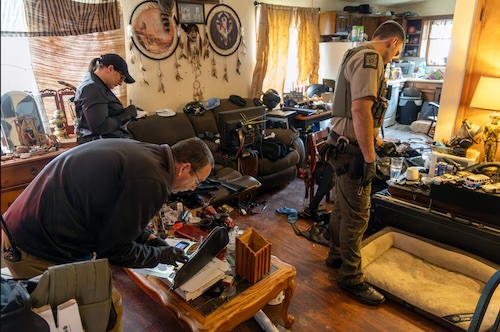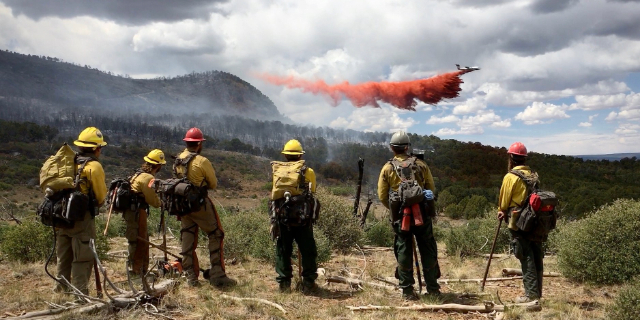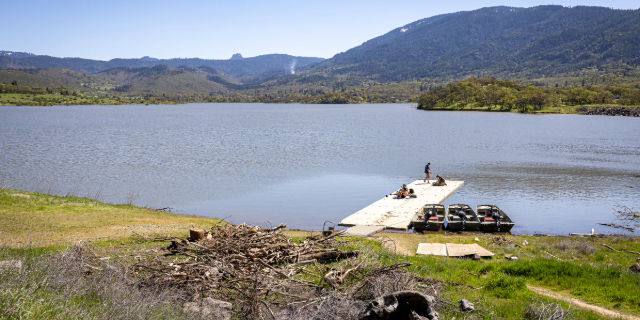Federal fire relief money heading to Jackson County
Published 1:30 pm Monday, February 20, 2023

- A women surveys the destruction in Phoenix following the Almeda Fire in 2020.
Jackson County will likely receive the majority of $323 million in federal recovery money coming to Oregon to aid housing restoration after the 2020 Labor Day fires, which included the Almeda and South Obenchain conflagrations.
In January, the state of Oregon and the federal government signed an agreement that will allow spending $422 million in Community Development Block Grant Recovery dollars through the Oregon Housing and Community Services Department.
“Although we are not making geographical suballocations, we know that at least half of the need is down here, particularly among low- and medium-income residents,” said Alex Campbell, OHCS chief external affairs officer.
Applications for the largest program, which has $204 million to help homeowners affected by the fire, will likely start being accepted in late spring, said Campbell. With federal approval coming just a few weeks ago, the agency is working to refine the programs, which will require extensive reporting due to federal rules.
OHCS will work with local agencies to administer the programs because they already have connections with fire survivors, Campbell said. Among those might be ACCESS, the Housing Authority of Jackson County, Jackson County Community Long-Term Recovery Group and others.
Jackson County and local communities will also get $13.85 million for help with community planning, infrastructure and resilience. Some of those funds might be used to help with commercial revitalization.
The Almeda and South Obenchian fires occurred Sept. 8, 2020. The Almeda Fire burned from Ashland through Talent and Phoenix to south Medford, destroying 2,500 homes and dozens of businesses. The South Obenchain Fire burned homes and outbuildings near Eagle Point, Butte Falls and Shady Cove.
Based on an assessment, the 2020 wildfires severely damaged or destroyed more than 4,300 housing units across eight counties and burned more than 1.2 million acres across Oregon. Based on an unmet needs assessment, the state has calculated nearly $1.9 billion in housing, infrastructure, economic revitalization and mitigation recovery needs.
The federal appropriation was announced in November 2021, but final award awaited development of a plan by OHCS and its acceptance. That plan was approved in October last year.
The primary effort, the Homeowner Assistance and Reconstruction Program, is for housing repair, reconstruction and replacement for homeowners who lost their primary residence. HARP will provide assistance to complete rebuilding, buy a new manufactured home or make homes safer.
At this time, the program does not include any benefits for homeowners who have completed their reconstruction and are safely and permanently housed. That may be coming in later phases of the effort, said Campbell. The first phase of this program will assist low- and moderate-income households only.
Applications can be made online for the HARP program when it is available, said Campbell. “We will also have physical locations with internet access and in-person support for folks who need assistance.”
The agency will do a survey in the next couple weeks to determine who might be interested in providing services. That might include the Phoenix-Talent School District, Hispanic aid group Unite and others.
Meetings have been held with groups to explain the HARP program. OHCS officials met Feb. 17 with the Jackson County Community Long-Term Recovery Group and Feb. 8 with the Latinx/o/a Interagency Committee in Medford.
Renters displaced by the 2020 fires will be aided through the Homeownership Opportunities Program. The state will help replace destroyed housing stock with affordable home ownership opportunities for disaster-impacted, first-time homebuyers.
The program will develop single-family, site-built or pre-fabricated structures to sell to disaster-impacted first-time homebuyers. More details on that program will be available later this year, and survivors are encouraged to sign up for updates at re.oregon.gov.
Administration procedures for HOP haven’t been decided yet, said Campbell. It might include an application program like HARP or it may partner with local groups, such as the housing authority, to create residences before seeking first-time homeowners.
A program for planning, infrastructure and economic revitalization has $42 million available statewide. The program will provide direct county allocations for local governments, nonprofit organizations, school districts, public housing authorities and other public or quasi-public entities in the eight most-impacted counties to address the unmet infrastructure, planning and economic revitalization needs.
Phoenix officials are looking forward to assistance for the commercial sector, infrastructure and resilience work, said City Manager Eric Swanson.
“For us in our government, it has been kind of a business focus. What are some of the ways we can use these funds to help businesses?” said Swanson. Requirements for parking and storm water management are sometimes an impediment to businesses returning, and that might be one possible use of the funds, he said.
Others involved with figuring out how to spend the $14 million allocated to Jackson County include Southern Oregon Regional Economic Development, Inc., the city of Talent, Jackson County and the Jackson County Community Long-Term Recovery Group.
Phoenix also hopes that the money intended for housing will help the community, Swanson said. The city has reached out to the Jackson County Housing Authority to see whether it might collaborate on housing efforts, but with processes still awaiting development, it is too early to say what might happen, said Swanson.
“For us, it’s a little challenging. We don’t build affordable housing,” Swanson said.
Another OHCS program under the grant is for immediate housing assistance, which has a budget of $20 million.
This program will provide assistance to eligible residents located in the 2020 fire-impacted counties who lack the resources or support networks to obtain affordable rental housing or need alternative housing until permanent housing solutions are secured. Other budget areas include legal services, housing and recovery services, resilience planning programs and administration.
Federal funding must be spent over the next six years. Campbell said he hopes the HARP program will be completed long before that deadline.
The 2020 wildfires damaged or destroyed more than 4,300 housing units across eight counties and burned more than 1.2 million acres across Oregon. The state has calculated nearly $1.9 billion in housing, infrastructure, economic revitalization and mitigation recovery needs.






